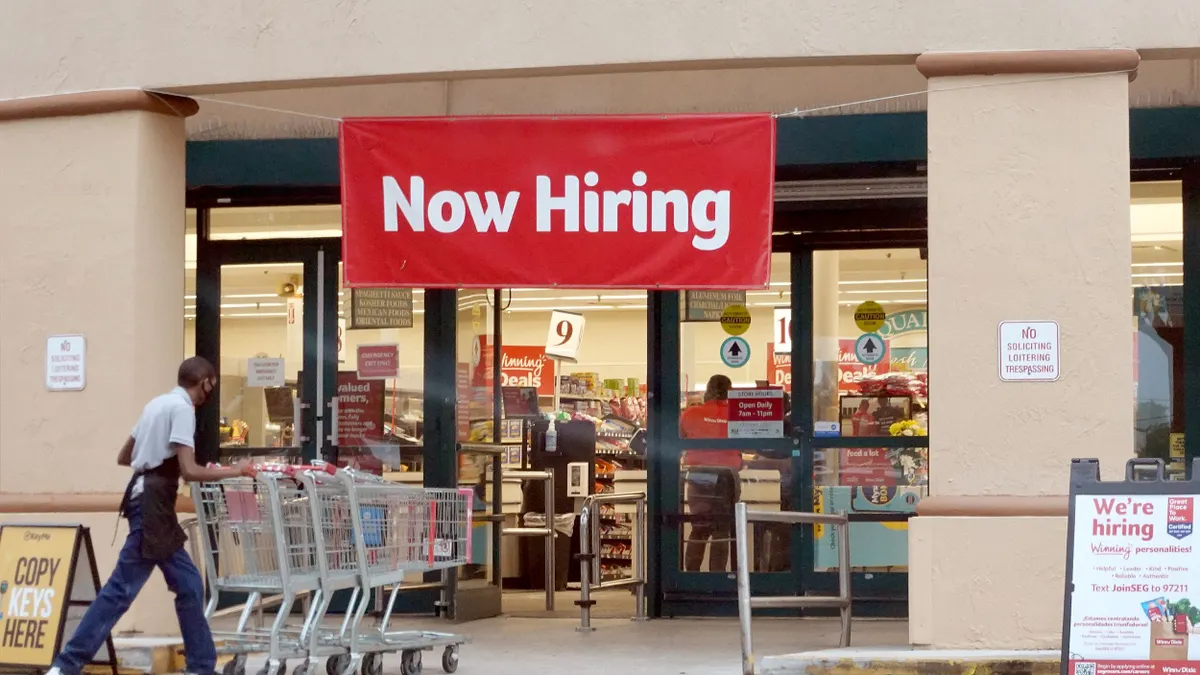With more communication and productivity tools on the market and more to come, how does a discerning employer sort through them all? Collaboration tools of all kind have flooded the market — but whether they help an employer communicate or hinder productivity depends on the application type and how a team interacts with it.
"Whenever there's new tech there's a wild west period, and we're there now," Max Caldwell, principal in charge of the people and HR transformation practice at The Hackett Group, told HR Dive. "There are a lot of apps, some fit for a specific purpose, like software development or design, some more generic." Too many companies may be trying to fit the available applications to their need and coming up short; "We're in a mid-place, where old habits and old tech are encountering new tech," Caldwell added. While the push for collaboration tech will likely continue, defining actual need and then finding the right application to address that need will be the real challenge for organizations, he said.
When used for their intended purpose, collaboration tools can absolutely live up to their "productive" name, Julie Forsythe, vice president of technology at Igloo Software, told HR Dive in an email. "However, when these tools are used as a one-size-fits-all approach, it doesn't always end well, with employees feeling disconnected and information silos scattered across the organization," she said. The key, she suggested, is integration. "Just remember, your ultimate goal will be getting people, processes and information connected as this is essential for an engaged and productive workforce," she added.
Early versions, like Skype and instant messaging for work, weren't always user-friendly, added Caldwell. Depending on the interface, users ran into a lot of folders and instructions. That's changed, and with that change came more interest in using the tools. "No one needed to see behind the curtain," Caldwell said, "so they're evolving to be more simple and intuitive. When tech improves, it can pull people into it more easily."
Will email ever be replaced?
The real question HR execs and employees alike may ask about communication tech: Will it replace email? Don't get any hopes up just yet, the experts said.
While Forsythe said to never say never in tech, she doesn't see email going away any time soon. "Even in the age of chat apps, there still exists a need for formal conversations. While chat apps provide efficiency and speed, email offers room to exchange detailed information," she said. Chat may bypass email as a preferred method of communication, but email will always have a role, even it that role evolves over time, she added.
Email is already changing, Mike May, senior director of the workforce dimensions technology partner program at Kronos, told HR Dive in an email. Instand messaging and texting are the preferred ways to communicate quickly, but new plug-ins for email, such as scheduling programs and other HR apps, are helping businesses leverage the time they spend in the inbox productively.
HR's role in selecting collaboration tools
The task for HR professionals begins long before they invest in employee training over new collaboration tools. First, an organization must understand the business challenge they are trying to address. "Many times companies try to throw solutions at a problem that may not exist," Forsythe said, "forcing teams to adhere to a system for the sake of introducing a new tool." That approach can lead to frustration. Instead, surveys can help determine what collaboration challenges individuals and teams are facing and where the process is breaking down — and then find tools from there.
For collaboration tools to be truly useful, HR should work cross-functionally with IT and operations and put themselves in the shoes of their employees. "How many applications are employees switching between in a given day and how much time are they spending in each application?" May said. "Can any of these applications be integrated on the back-end so that the employee only has one intuitive front-end interface to learn? It's frustrating for an employee when they feel like they need to 're-learn' an application every time they use it because it is only accessed once or twice a week."
The future of collaboration
Younger workers grew up using FaceTime and messaging apps, Caldwell said, so collaboration tools will be a natural fit for them and the workplace as time goes on. And developers are responding with better tools that have improved user interfaces and integrate seamlessly into current work.
Who will ultimately win the collaboration war? There may not be a single winner, after all, Forsythe said; employers should choose the tools that best meet their needs and ensure they are anchored with a centralized digital destination. "Right now, some tools excel in specific areas but none of them are a master-of-all," she said. "Unless a tool can truly meet all of those needs, it can't be considered the definitive winner."
The collaboration tools that will see the most long-term success are the ones which extend well beyond communication, May said; "They need to allow users to complete actions or access information important to them regardless of which business application the task is typically performed in."




















